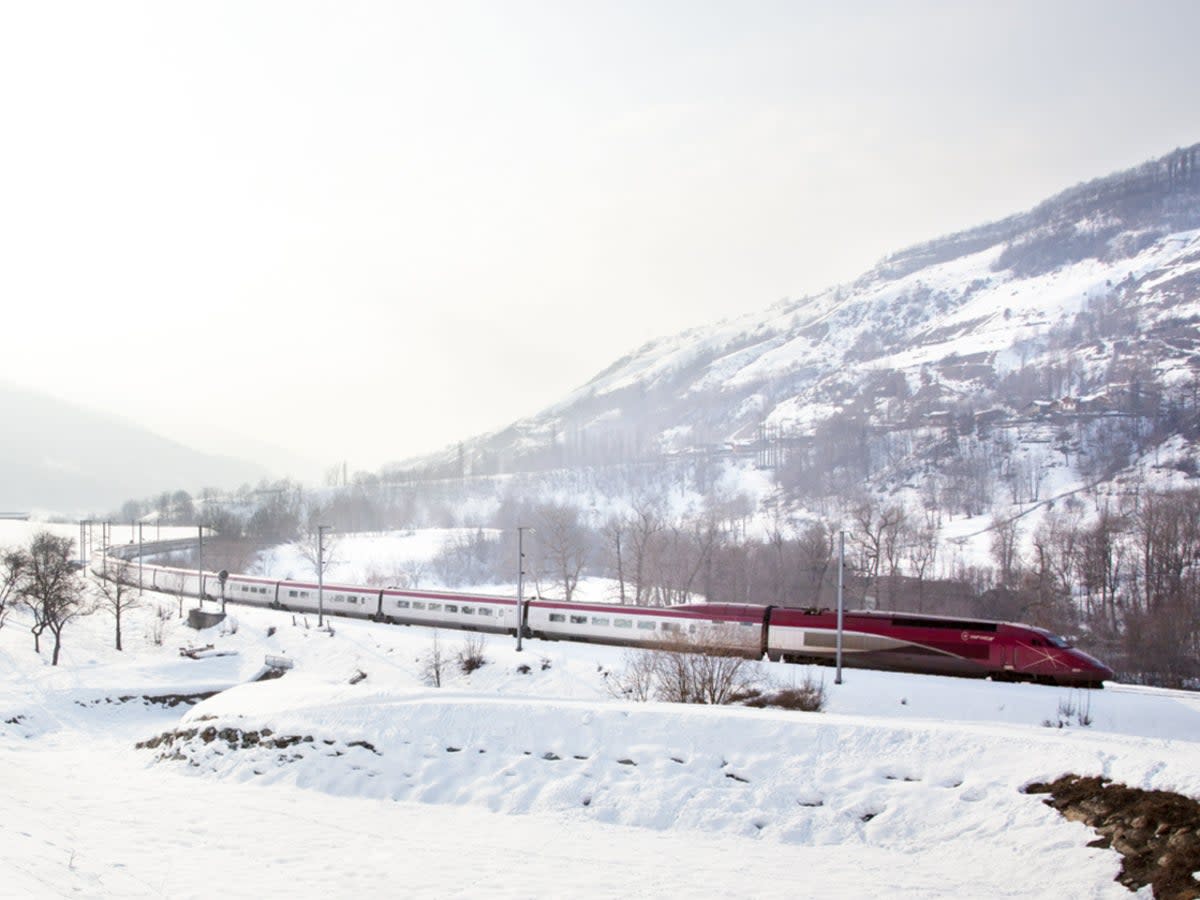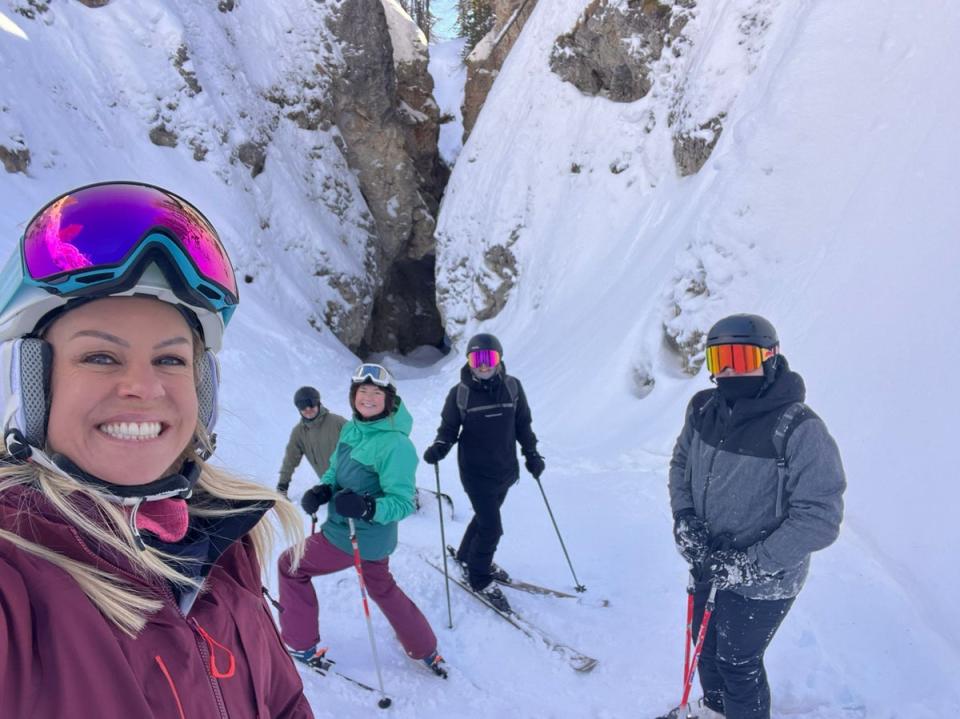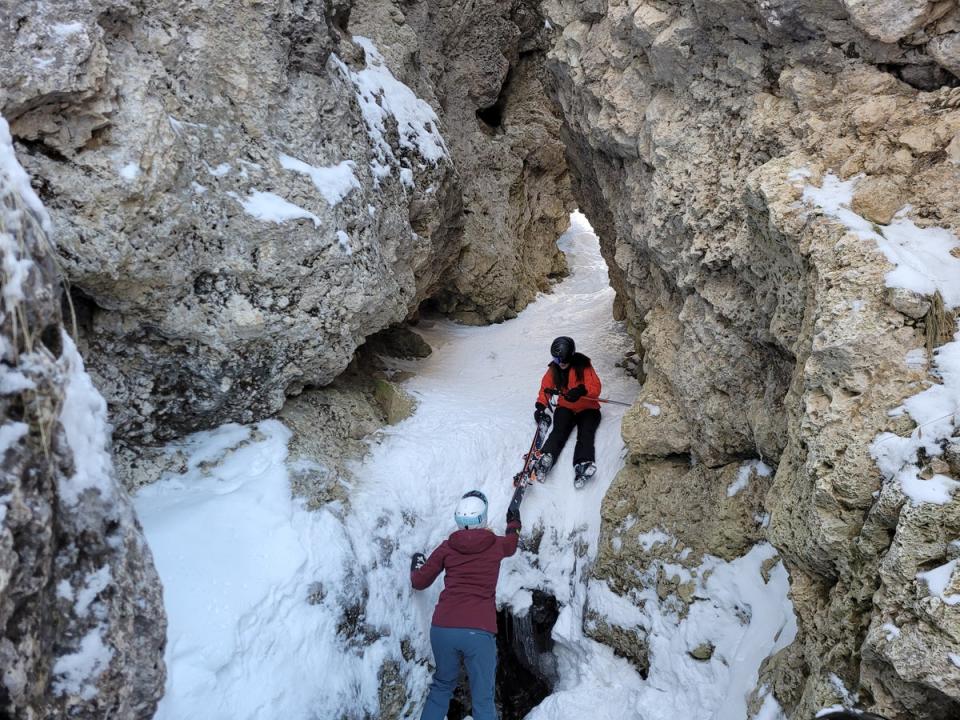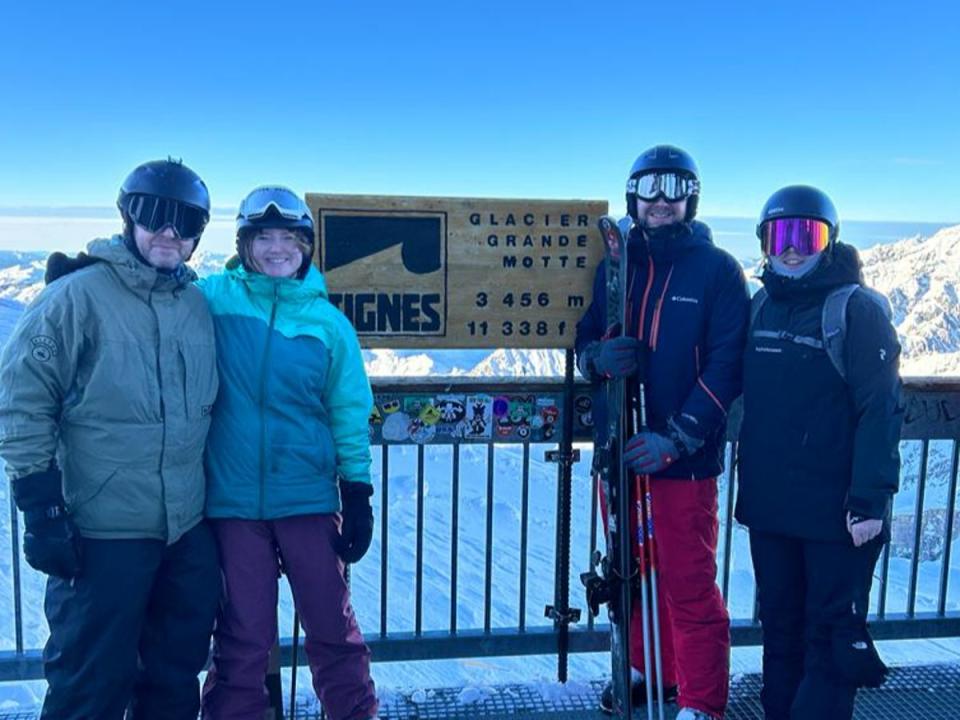Eurostar have rebooted their ‘ski train’ – here’s why you should give it a go for your next snowy holiday

I’d like to share a piece of advice, if I may. When Chemmy Alcott, ex-downhill ski racer and current Ski Sunday presenter, says she’s going to take you somewhere called the Hidden Valley in the French Alpine resort of Tignes – as your second run on your first day’s skiing – just politely decline. Trust me on this.
“You’ll love it!” she’d said cheerily half an hour before. And, buoyed up by her insatiable enthusiasm, and slightly punch-drunk at her bright white smile and glam sweep of platinum blonde hair, we’d all nodded along.
Cue shrieks and expletives 30 minutes later, as we attempted to follow her down this iconic off-piste run that winds between rock faces, burrows through tunnels, and involves taking off skis and jumping down drops and over deep pools of water. Chemmy makes it look laughably easy, as if a child could do it, taking each obstacle in her stride and whizzing off through the trees like a Duracell bunny. The rest of us are decidedly less elegant. For one stretch, tired of tumbling over, we collectively admit defeat and leave skis off to trudge down a steep section of the narrow trail instead. At another stage, we do the opposite, clambering up the mountainside when we’re stymied by a lack of snow which makes continuing along the route impossible.
Despite all that, she’s right: I do love it. The setting is staggeringly beautiful and, as the name suggests, it feels properly “hidden”. We have this wonderfully scenic, pin-drop quiet pocket all to ourselves, in itself a marvel when skiing somewhere as popular as this French mega-ski area in the Tarentaise Valley, shared by Tignes and the neighbouring resort of Val d’Isere.

It’s not every day that I get to ski with a former Winter Olympian. But Chemmy’s here for the same reason I am – to try out the rebooted snow train from the UK, trialled for a limited period at the start of the 2023-24 season to see if it’s viable to fully revive it. The answer is a resounding “yes”: the service completely sold out. Now, Eurostar has announced it’s returning next season, with tickets on sale from 9 July 2024 for services departing 21 December 2024 to 2 March 2025.
There are other indications that rail travel to the Alps may well become mainstream again: leading snowsports tour operator Inghams has started selling package holidays with train instead of plane travel. It’s a powerful sign, reflecting the brand’s confidence in terrestrial travel as a product that consumers want. As a flight-free traveller since the tail end of 2019, I’m all for it – but I would also recommend it to the most frequent of flyers.
My logic runs thus: ski resorts aren’t quick or easy to reach, even by jet. It always takes the best part of a day once you’ve factored in getting to the airport, hanging around, the flight time, and the inevitably long and winding transfer by coach up the mountain (particularly when heading to the French Alps). Travelling by train barely takes more time, and is a far more pleasant experience.
The benefits of coming by rail are compelling. For a start, the luggage allowance is a lot more generous than you’ll find on a budget flight: two bags and your ski or snowboard equipment
The snow train runs from London St Pancras on Saturdays and returns on Sundays, going direct to Lille on the outbound leg, where passengers hop off and transfer to a former Thalys, now Eurostar, train – but without having to change platforms. It then speeds on to Chambery, Albertville, Moutiers-Salins-Brides-les-Bains, Aime-la-Plagne and Bourg-Saint-Maurice, from where holidaymakers can transfer by road to a smorgasbord of French resorts.
We hopped off at Bourg after a journey time of just over eight hours; Les Arcs is the closest resort, just above the town and accessible by a funicular straight up the mountain. But Tignes, Val d’Isere, and the resorts of the Three Valleys, the world’s largest connected ski area, are all within an easy distance. Our transfer to Tignes took around 40 minutes.
The benefits of coming by rail are compelling. For a start, the luggage allowance is a lot more generous than you’ll find on a budget flight: two bags and your ski or snowboard equipment. Not to mention the lack of limits around liquids, meaning you can take drinks plus all your full-sized toiletries (with no need to separate them into a clear plastic bag). And you spend the journey in relative comfort, with far more space than an airline seat and a tray table that’s big enough to accommodate a laptop. There’s even wifi for much of the journey.
We were incredibly lucky during our pre-Christmas stay, blessed with both abundant snow cover on the slopes and several days of blazing sunshine and bluebird skies. It makes both cruising down groomed pistes and partying on tables at the legendary Folie Douce apres bar a pure joy.

Truly leaning into the former, on one day we attempt the “four corners”: a challenge where you have to get to the four furthest points of the ski area. It’s a catch-first-lifts, skip-the-boozy-lunch adventure that’s only possible if you really put your foot on the gas. I feel a rush of joy as we swoop down the steep, wide slope of the iconic black Face run leading to Val d’Isere, the snow creamy as freshly churned butter. You only get to enjoy this sensational World Cup run in these conditions when you get there early – before the sun and reams of other skiers have done their damage.
From there, we race over to catch the Les Montets drag lift to the highest point in Val d’Isere at 3,197m, then descend 1,267m to Le Fornet before catching a bus and flurry of ski lifts to reach Tignes-les-Brevieres at the furthest right point of the ski area (where we finally pause, briefly, to eat). Then it’s the final push all the way up to the pinnacle: the wind-blasted Grande Motte glacier at 3,456m. We make the last funicular of the day and subsequent cable car by the skin of our teeth, the burst of jeopardy adding a thrill to what would have otherwise been an unmemorable if fun ski day.
Back at Ingham’s Hotel Rosset chalet-hotel that night, I’m especially grateful for the in-house spa, with a muscle-melting sauna and steam room, to iron out the kinks – not to mention generous slabs of cake in the lounge, leftover from afternoon tea, before canapes and a three-course dinner take centre stage. It’s here that we learn that Inghams isn’t just pursuing more sustainable snowsports holidays via the form of transport you choose to take. Food is also a big part of the equation, with enhanced vegetarian options, a mandatory meat-free evening and, most impressively, a bespoke food and waste management system that calculates the exact amount of ingredients to order – down to the very last gram – to eradicate food waste as much as physically possible.

It’s heartening to see sustainability being put front and centre when it comes to skiing. And as we wind up our glorious early-season trip, instead of the dread that used to descend when anticipating a day spent on coaches, at airports, and on planes, I feel something else entirely: excitement at the prospect of catching the snow train home. All aboard for a different kind of ski holiday.
Travel essentials
Inghams Ski offers eight nights, B&B, at Hotel Le Paquis in Tignes, from £1,258pp for 4 January 2025 departures. Includes all rail travel, transfers, extra ski day and overnight stay in Bourg-Saint-Maurice.
Eurostar snow train services operate from 21 December 2024 to 2 March 2025; from £139, one way.
Read more: Why it’s not too late to learn to ski as an adult


